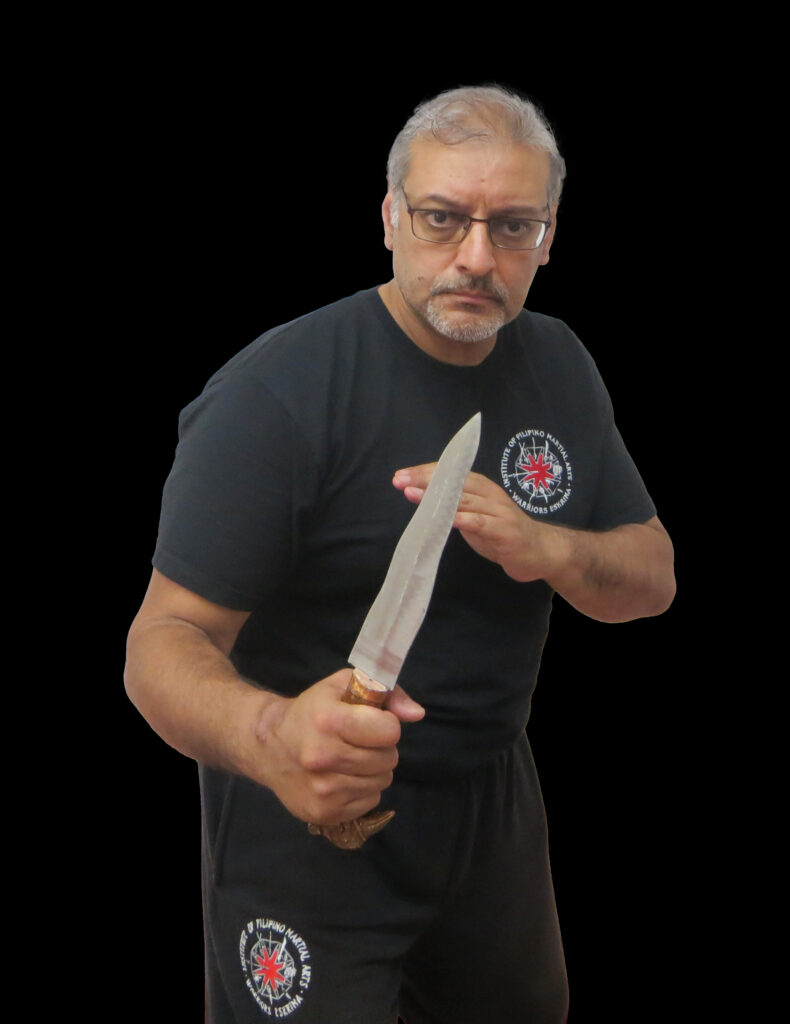The knife is among the oldest weapons and tools used by mankind and it is still widely used today even after the invention of firearms. The enduring legacy of the knife is due to its easy availability and simplicity and also a knife never has to be reloaded and does not jam. All that is needed is a willing individual and unfortunately, it has become widely used as an offensive tool by gangs and criminals on the streets of Britain as is sadly evident by many victims’ stories in the weekly national newspapers.
The Philippine’s has a strong history as being a bladed culture, the Filipinos have experienced many foreign invasions from the Spanish, Americans and the Japanese along with tribal wars which led the Filipinos to develop effective and functional bladed systems for their survival, also as in the modern age the blade does the talking on the streets of the Philippines. The verification of the effectiveness of the Filipino bladed systems has been recognised by the training in Eskrima by many of the Elite Military units of the world.
Baraw is a Cebuano term used in the art of Eskrima that means knife or dagger. The term Baraw is more commonly used on the Cebu Island in the Visayan region whereas other islands and regions more commonly use the term Daga but both terms are often interchangeable within the Filipino martial arts community.
The terms Baraw and Daga can be used either as Solo Baraw or Solo Daga associated with single knife fighting and defence systems, Doble Baraw or Doble Daga associated with the double knife fighting systems or even with a combination of long and short weapons e.g. stick and dagger fighting systems Olisi Baraw or sword and dagger fighting systems Espada y Daga.
The initial Baraw methodology is taught from a defensive perspective, where the student is taught how to defend himself against a knife attacker, understanding grips, how to protect vital targets, using tapping to build up sensitivity and moving the blade into a safe position along with footwork, hitting, breaking, locking, disarming and returning to sender. This is naturally the normal approach of teaching blade-based Filipino martial systems in the Philippines; the defensive approach is also the more challenging and difficult part of any system.
The student is taught to integrate and understand ranges and how to bridge the distance, learning how to flow from empty hand to weapon and vice versa and how to profile weapons and potential attackers and understanding one’s environment, developing a higher level of awareness than the average person and later advancing to knife sparring, knife versus knife, double dagger and knife grappling.
However, using Eskrima is a last resort when there is no escape or it is blocked or there is someone with you who cannot get away, always remember that the best thing to do whenever confronted with an armed assailant is to hand over your wallet or find a way to escape. The adaptability and flowing skills an individual learns from practising Eskrima can allow them to pick up anything such as pens, books, keys, umbrellas, stones, pipes, magazines, trash cans or whatever is available and effectively turn it into a weapon to defend oneself provided that you can deploy it and know the limitations of whatever weapon is at hand along with the environmental constraints.

